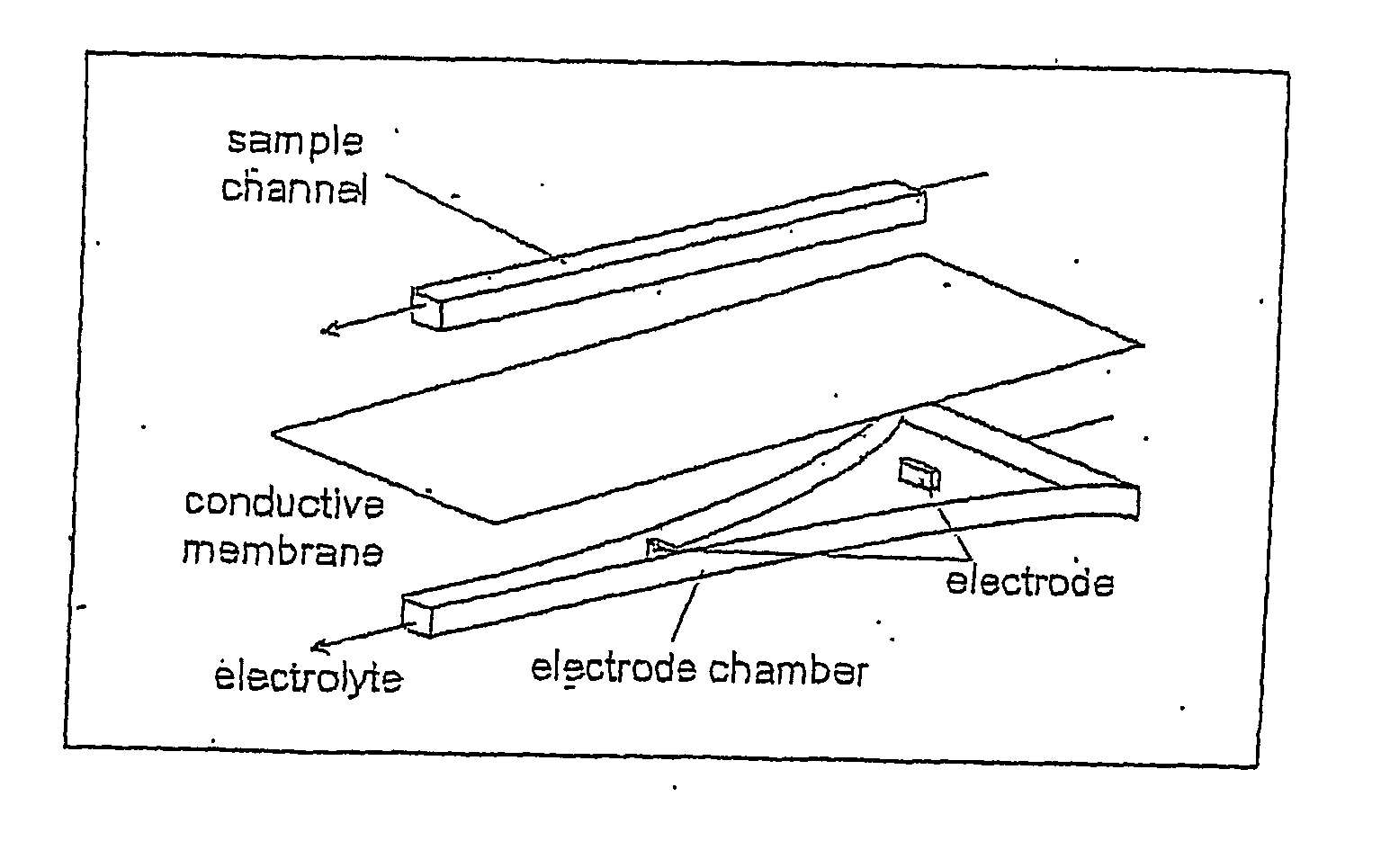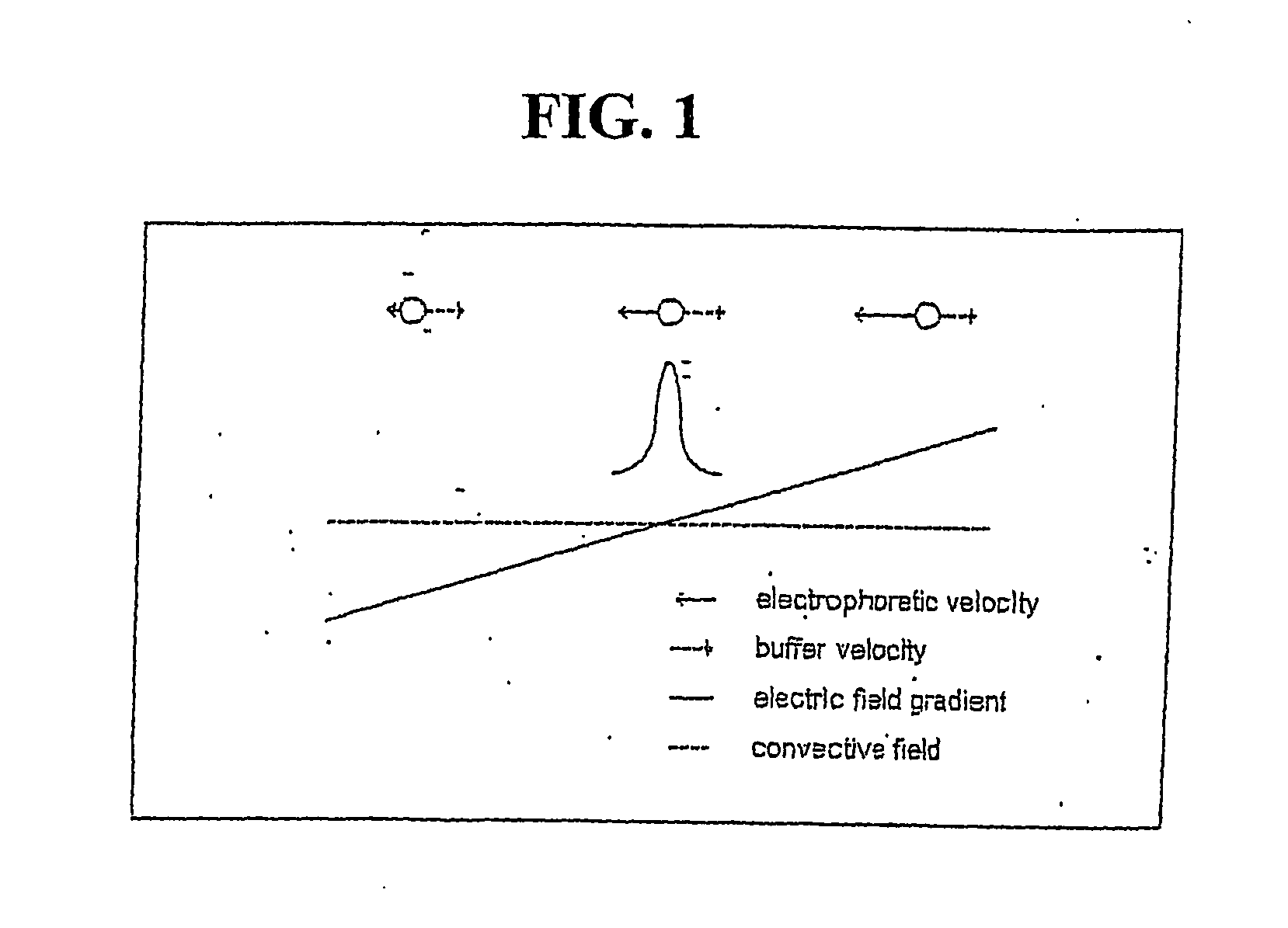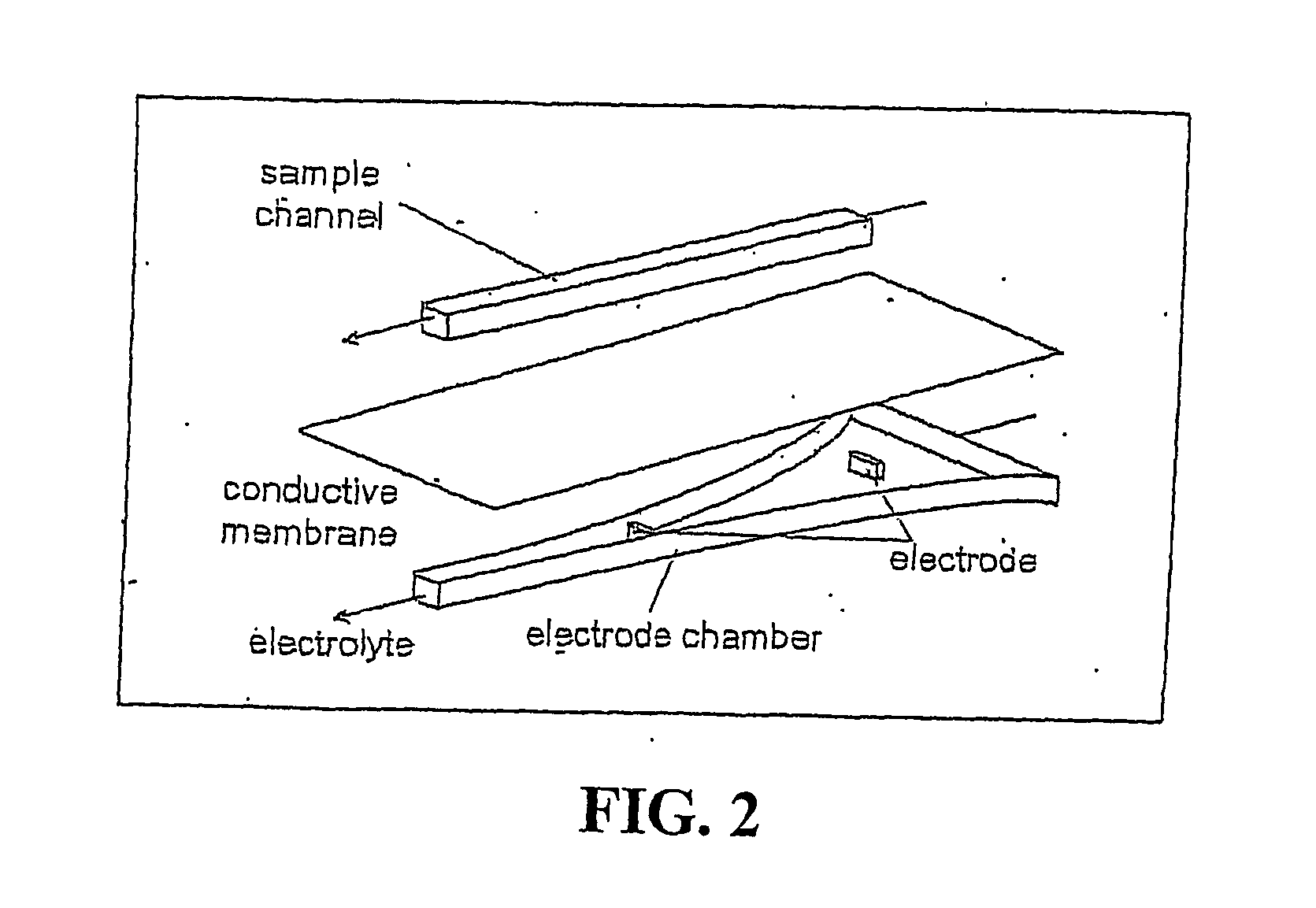Method and apparatus determining the isoelectric point of charged analyte
a technology of isoelectric point and charged analyte, which is applied in the direction of fluid pressure measurement, liquid/fluent solid measurement, peptide measurement, etc., can solve the problems of non-uniformity of the electrode chamber, reducing the electrophoretic mobility,
- Summary
- Abstract
- Description
- Claims
- Application Information
AI Technical Summary
Benefits of technology
Problems solved by technology
Method used
Image
Examples
Embodiment Construction
[0061] Unless otherwise indicated or unless otherwise clear from the context in which it is described, aspects or features described below of preferred embodiments should be understood to be disclosed generally for use with other embodiments of the devices and methods disclosed herein. Also, in accordance with traditional patent usage, the use of the indefinite article “a” in the following is intended to mean one or more than one, that is, at least one, unless otherwise clear from the context in which it is used. It should be understood that the mere usage of the phrase “at least one” or like phrases, in certain instances, is alone not an indication that usages of the individual article “a” in other instances means only one.
[0062] Without wishing to be bound by theory of operation, it currently is understood that the electric field gradient serves to provide a counter force to the force of the fluid flowing through the titration chamber so as to hold a charged analyte in a stable l...
PUM
 Login to View More
Login to View More Abstract
Description
Claims
Application Information
 Login to View More
Login to View More - R&D
- Intellectual Property
- Life Sciences
- Materials
- Tech Scout
- Unparalleled Data Quality
- Higher Quality Content
- 60% Fewer Hallucinations
Browse by: Latest US Patents, China's latest patents, Technical Efficacy Thesaurus, Application Domain, Technology Topic, Popular Technical Reports.
© 2025 PatSnap. All rights reserved.Legal|Privacy policy|Modern Slavery Act Transparency Statement|Sitemap|About US| Contact US: help@patsnap.com



